Geographic Atrophy: Your Questions Answered
Featuring
Philip Niles, MD
Vitreoretinal Surgeon and Partner at Buffalo Niagara Retina/OCLI Vision
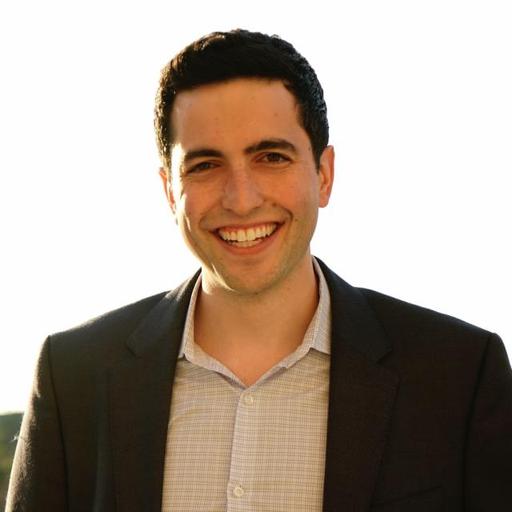
Cookie Notice
This site uses cookies. By clicking “Accept All Cookies,” you agree to the storing of first- and third-party cookies on your device to enhance site navigation, analyze site usage, and assist in our marketing efforts. Cookie policy
Privacy Preference Centre
Always Active
Cookie Notice
This site uses cookies. By clicking “Accept All Cookies,” you agree to the storing of first- and third-party cookies on your device to enhance site navigation, analyze site usage, and assist in our marketing efforts. Cookie policy
Privacy Preference Centre
Always Active
Privacy Preference Centre
Always Active




Philip Niles, MD
Vitreoretinal Surgeon and Partner at Buffalo Niagara Retina/OCLI Vision

Geographic atrophy is an advanced and severe form of dry age-related macular degeneration that can lead to permanent vision loss. Guest expert Dr. Philip Niles shared what you need to know about identifying, preventing, and treating geographic atrophy and delved into the landscape of available treatments.
Philip Niles, MD, is a Vitreoretinal Surgeon at Buffalo Niagara Retina/OCLI Vision with special interest in age-related macular degeneration, diabetic retinopathy, vascular occlusions, retinal detachments and macular holes. Dr. Niles is the author of numerous publications in ophthalmologic scientific journals, and presented his research at national meetings such as the Association for Research in Vision and American Society of Retina Specialists Annual Conference.
Dr. Niles completed his undergraduate degree at Case Western Reserve University, after which he completed both an MBA and a medical degree at Case Western Reserve University School of Medicine and Weatherhead School of Management. Post-medical degree, Dr. Niles finished his internship at the University of Pittsburgh Medical Center Mercy Hospital and his residency at the University of Iowa Hospitals. Dr. Niles completed a Vitreoretinal Surgery Fellowship at the University of Toronto in Ontario, Canada.
Download English Transcript PDF
DR. DIANE BOVENKAMP: Hello and welcome. My name is Dr. Diane Bovenkamp, Vice President of Scientific Affairs at BrightFocus Foundation. I’m very pleased to be your host for today’s Macular Chat, called “Geographic Atrophy: Your Questions Answered.” This Chat is brought to you today by BrightFocus Foundation. Macular Degeneration Research is one of our programs at BrightFocus. We fund exceptional scientific research worldwide to defeat Alzheimer’s disease, macular degeneration, and glaucoma, and we provide expert information on these heartbreaking diseases. You can find much more information on our website at www.BrightFocus.org. I am pleased to introduce today’s guest speaker. Philip Niles, MD, is a vitreoretinal surgeon at Buffalo Niagara Retina/OCLI Vision with special interest in age-related macular degeneration, diabetic retinopathy, vascular occlusions, retinal detachments and macular holes. Dr. Niles is the author of numerous publications in ophthalmologic scientific journals and has presented his research at national meetings, such as the Association for Research in Vision and Ophthalmology and American Society of Retina Specialists Annual Conference. Dr. Niles, thank you for joining us today.
DR. PHILIP NILES: Hey, it’s a pleasure to be here. Thanks for having me.
DR. DIANE BOVENKAMP: And thank you so much, I know that you’re in the middle of a clinic right now, but we know that we’re getting the best information fresh off the presses from you, so maybe I’ll just start with the first question, or two questions: What is geographic atrophy, and how does this relate to the terms that many of us are familiar with, dry AMD and wet AMD?
DR. PHILIP NILES: Those are great questions. Before starting, thanks so much for having me here. Super honored to be a part of this. I think that it’s great, the work that you guys are doing for patients and really answering patients’ questions. A lot of the patients I see come in with more so a sense of fear and concern, and I really think that the more somebody learns about the conditions they have, the better off they are. So, I think you guys are doing great work. In regard to your questions, what is geographic atrophy, and how does this relate to conditions like macular degeneration? I think it’s important to point out that these are very common conditions. Macular degeneration, especially age-related macular degeneration, is really the most common cause of vision loss in the U.S. and is the most common reason that a patient walks into my door. What geographic atrophy is, is it’s a condition that’s on that spectrum of age-related macular degeneration. So, what we used to call advanced macular degeneration, I’d say is oftentimes considered geographic atrophy. Historically, that’s more of the dry form is the geographic atrophy, versus the wet form is more about bleeding in the retina.
DR. DIANE BOVENKAMP: Great. So, it’s the wet form that is … there’s advanced wet and there’s advanced dry. So, the advanced dry is geographic atrophy, and the advanced wet are the ones that people can get needles for, the anti-VEGF, right? But it’s a different kind of macular degeneration, if that makes sense right?
DR. PHILIP NILES: Yeah, great question. I guess the way to think about it, and previously patients thought about it, was that, “If I have the wet one, I get the injection, and if I have the dry one there’s nothing they can do.” And that’s sort of changed over time. Starting last year, in 2023, we had two different medications get approved for geographic atrophy or dry macular degeneration, and while they don’t, per se, get the resolution of a disease that we can get with wet macular degeneration, they can oftentimes slow down its progression, which can be very helpful in some patients. So, if I were to describe the difference between wet and dry, what I would say is, if you imagine the macula, or your central vision, the very focal point in the back of the eye, there is this line that separates the retina from the blood vessels, and that line degenerates in people as we go through life. And if it degenerates somewhat, then the vision can degrade somewhat. If it degenerates enough, then the blood vessels from the back of the eye can leak into the retina. And once the blood vessel leaks, that’s called wet macular degeneration. If there aren’t any blood vessels leaking, then we call it dry macular degeneration. And just because somebody has wet or somebody has dry doesn’t really well describe their vision. Somebody can have wet macular degeneration where that leaking blood vessel was caught very early, and they can maintain excellent vision. And somebody can have dry macular degeneration that never bleeds, and they can have significant vision loss. The difference between wet and dry is just the presence or absence of a leaking blood vessel. And now, the difference between wet and dry is the difference of what treatment options we can choose from.
DR. DIANE BOVENKAMP: Yeah, I think that’s been the most exciting thing that’s happened. Before it was the AREDS—if you had intermediate dry, you could take those vitamins, and maybe it will help to slow progression to the late-stage dry AMD. But what happens to vision as geographic atrophy progresses? Can you just briefly describe what happens? Or GA. I’ll call it GA, geographic atrophy. GA is another word for it.
DR. PHILIP NILES: Yeah, sure. When you get GA, or geographic atrophy, it’s patches of your central vision that kind of go missing. And if it happens in the very center, that obviously can be quite debilitating to patients and make things like reading or watching TV or driving very challenging. Any task that involves your central vision. Sometimes you get geographic atrophy not directly in the center. It can be a little bit off to the side, and that’s less symptomatic for people. But it’s still important to know of because you sort of watch the progression of that. And you know that if somebody has a progressing GA over time, that if it’s progressing more quickly, then it’s geographic atrophy that might be more responsive to treatment versus if somebody has central geographic atrophy, their central vision might already be very compromised.
What happens—to answer your question as to what happens as geographic atrophy progresses? Well, if it progresses in the very center of the vision, then you get central vision decreases. If it happens off to the side, then oftentimes patients might not even notice that.
DR. DIANE BOVENKAMP: So, it’s almost like it doesn’t affect the same part of the retina in every person. So, for everybody, it could start in a different spot, and how your vision is affected just is a random chance of what you have.
DR. PHILIP NILES: It’s really all about location. If you think about the macula in general, it’s actually a very small area. We’re talking about 4 or 5 millimeters vertically and horizontally that’s super important to people, and where the geographic atrophy happens within those 4- to 5-millimeter squares, that’s really what affects a person’s quality of their vision, which has significant impacts on quality of life.
DR. DIANE BOVENKAMP: That’s great info. Dr. Niles, there are, as you mentioned, currently two FDA-approved treatments available for geographic atrophy, which are called these funny names—most drugs have funny names—so, Syfovre® and Izervay™. Can you tell us about each and how they work?
DR. PHILIP NILES: Yeah, absolutely. Izervay and Syfovre are two different medications that detect the same complex or same pathway in the eye. There’s this thing called complement, and that is one way or one molecular pathway through which geographic atrophy progresses, and both drugs try to stop that pathway from progressing. Each drug attacks a different part of the pathway. Izervay attacks what is called C5—and Syfovre attacks what’s called C3, or tries to prevent it. But they both function in kind of similar routes from a big-picture standpoint. Some of the major differences between the two drugs, I’d say, are actually the FDA’s approval and insurance coverage for them. Izervay was able to get coverage for just 1 year of use and that’s somewhat of a limitation, because with geographic atrophy, this is a chronic progressive condition that doesn’t go away after a year, so having 1 year of use for a condition that’s not going away after a year has really limited Izervay’s usage. Syfovre, on the other, hand has had, I would say, better coverage for patients. And so, more physicians have been leaning towards Syfovre. Syfovre you can use as long as you’d like, and it can be dosed every month or every other month.
DR. DIANE BOVENKAMP: Can you switch back and forth between the two? Like, I guess that’s just a decision between the health care professional and the patient, right? Especially if, maybe, someone doesn’t respond to one or the other?
DR. PHILIP NILES: Now, that’s a great question. It’s tough because when we think about geographic atrophy, it’s typically a very slow-moving condition, and what our data from the studies for Syfovre in particular have showed that the longer a patient is on Syfovre the better the difference is compared to if the patients hadn’t been on Syfovre. And so, in some respects, there’s this potential lock-in effect or benefits with the longer that you’re on it. Which is very surprising. That’s kind of atypical. Usually, the medicine loses its effect over time, but with Syfovre we’ve kind of seen this continual improvement in terms of the rate of progression of someone’s geographic atrophy the longer they’re on Syfovre. With Izervay, we haven’t had the data to support that yet. Not that it’s not true, and I imagine it would be true, but it just hasn’t been shown, and with the coverage only lasting a year, it’s sort of limited in being able to apply that to your patient practice.
DR. DIANE BOVENKAMP: Great. And of course, as you said, these were approved last year, so we’ll be looking for more … I guess one of the questions I was going to ask: These treatments were both approved in 2023, and so, as you said, they’re going to be continually collecting data. So, has new data come out from continued studies on these drugs?
DR. PHILIP NILES: Yeah, great questions. Syfovre just released some more data. They did what is called the GALE extension study, where they’re hoping to test the effects of Syfovre in patients up to 5 years’ time. And more data’s being released as that study goes on, so while we still don’t have the final results because it takes 5 years, it’s looking more and more optimistic. And I think what you were getting at is really important and that this is really like the first or second inning on treatments for geographic atrophy. If you had come to my office in January of 2023, we wouldn’t really have had any treatment for geographic atrophy or for dry macular degeneration, so this is our first iteration, and we’re hopeful they have better and longer-lasting drugs in the future. I think what’s been so great is just how much research there is in this area and how quickly things have been progressing from a pharmaceutical side. It’s been nice to have options to offer patients for diseases that we previously didn’t have great options for. Just like you were saying, it used to be, “Take the vitamins,” and that was really all we could offer. But now, hopefully we will get better and better medicines in the future.
DR. DIANE BOVENKAMP: Sorry, I just thought that was a great analogy used about the first inning. You’re talking about baseball versus, say I like watching hockey. That’s a fast-moving sport, so we have to think of this as, like, lots of innings in a baseball game, so we’ll sit back and see what happens. One of the questions that I have is: You said that Syfovre and Izervay work on this path. So, my understanding, I think this is, like, inflammation. Kind of like if you get allergies or something … well, not exactly an allergy. So, maybe if you get a bacterial infection, I think the C3 and C5 proteins kind of protect you against that, right? And is this just a matter of in geographic atrophy, the C3 and C5 proteins are overactive or something, and so it’s kind of like allergies, where you want to try and take an allergy pill to dampen down the response or something? I know it’s not a direct analogy, but is there a better way to explain what the pathway is?
DR. PHILIP NILES: Yeah, I think that’s a great way of describing it. But basically, it’s just like we were talking about that line that separates the retina from the blood vessels, that’s responsible for recycling these molecules that our retina—in a certain layer of the retina—the retinal pigment epithelium sort of depend on to work. And when that layer doesn’t work, these cells can die off, and so what this is, is really slowing down that pathway of the cells dying off is how I would think about it. But I think going back to what you were describing before, about baseball versus hockey, you know, when we talk about stuff like that, it sounds like something that sort of has this kind of defined path and defined timeline, but really, geographic atrophy is more like a disease that moves at somewhat of a glacial pace, and it’s something that we’re tracking once every 6 months or so in most patients who aren’t receiving treatment for it. And so, I think the best way to really describe this is: When you go to your doctor and see your pictures over time, when we check patients’ pictures and I’m looking at their history I’m looking at pictures from years ago in comparison to today, when they’re available. And I think that’s the most important thing, that when we look at the pace of the research and the new medicines coming out, that pace is accelerating. And geographic atrophy, we’re just trying to stay in the game until we have better and better treatments for it.
DR. DIANE BOVENKAMP: That’s good to know. I mean, yeah, there’s so many other drugs that are down the pipeline, too. But what is the goal of the treatment? So, what can people expect if they do get the treatment? Will it restore lost vision, or is it more like preserving what you have already?
DR. PHILIP NILES: That’s probably the question I’m asked most frequently by patients who are considering this, and I wish we had something that restored vision for geographic atrophy, but it’s important to note that we don’t. I wish we had a way of bringing patients’ their vision back, but what these drugs actually do is they slow down the progression—really, the rate of the geographic atrophy forming over time. So, when we monitor someone’s geographic atrophy and how much area has atrophied, we kind of put a certain speed at which that’s happening, and what these drugs do is they slow down that speed.
DR. DIANE BOVENKAMP: Got it. So basically, this is a really good plug for people to get their eyes checked every year so you can get diagnosed early because it’s, like, time lost is vision lost, right?
DR. PHILIP NILES: You know, I think what’s super important is having a good baseline. For instance, if I see someone who has pictures from 5 years ago and they look the same as the pictures from today, they’re not a great candidate for these treatments because their disease is already progressing so slowly that slowing it down 25, 30, even 40 percent isn’t all that helpful. If someone is only driving 10 miles an hour and you slow them down to 8 miles an hour, that’s not super critical. But if someone is going, like, 60 miles an hour and you slow that patient down to 45, that could be meaningful to somebody over the long term. And so, I think that’s what’s super important, is to just sort of be able to establish this history and this trajectory over time.
DR. DIANE BOVENKAMP: That’s actually really critical, and it kind of leads into the next question I had: What do individuals and their health care providers need to consider before starting treatment? So, I think you already answered part of it, which is there’s a lot of wait and see. That’s one of the options for treatment, wait and see if the rate is too slow, there’s some kind of slope or rate after which, maybe, the health care provider can decide to start treatment.
DR. PHILIP NILES: Yeah, I think the biggest consideration for patients is how concerned they are about this and how much they think it will help them. I see a lot of patients who, if their geographic atrophy is progressing, let’s call it a 30 miles an hour just for an arbitrary number, and I tell them “Hey, I have a treatment that can get you down to 22 miles an hour.” I have some patients that would jump for that, and I have some patients that wouldn’t really jump for that. But I think the important thing is having the conversation with the doctor about it and getting those pictures so you can see how things are going. all the different types of patients we see. I have a lot of patients who only have one good eye and would do anything to keep their vision in their good eye. I have patients who have a family history of macular degeneration. I feel like those patients really know what they might be up against, and those patients might be highly motivated. And I have other patients who, you know, they’re in their late 90s. They say, “Hey, I hate going to the doctor. I really don’t need this. Unless it’s really going to restore my sight, then I don’t want to do it.” We say “Okay, don’t do it.” So, I think what I’m really taking away from geographic atrophy treatments is that it’s a bit more individualized and much more discussion-centric, versus you were talking about treatments for wet macular degeneration. That somebody has to do, or they’re going to lose vision quite quickly if they have a bleed in their retina. But with geographic atrophy, it’s a bit more individualized and much less rushed.
DR. DIANE BOVENKAMP: Well, that’s really good advice.
DR. PHILIP NILES: This is a slow-moving chronic condition, and we just want to slow it down in accordance to patients’ wishes and what treatment burden they’d like to have. But it’s nice to actually have something that we can offer now, versus before, we didn’t. And I do think that our offerings are, like I said, they’re sort of the first iteration of offerings, and we’re just trying to keep people in the game until better things come along, but I actually think that Syfovre in particular is helpful and very good at slowing that rate, which can be very impactful to people.
DR. DIANE BOVENKAMP: Great. For listeners who are around the country, are both treatments widely offered by retina specialists around the country, and do you need—I mean, this is something you have to consider in the U.S.—do you need preapproval from insurance required or Medicare? Do you know anything about it, or is it just, you know, individual?
DR. PHILIP NILES: Yeah, that’s a great question. I would say that treatments are widely offered by retina specialists around the country. I was at the American Society of Retina Specialists meeting. Everyone has heard of these drugs, and I would say almost every retina specialist, if they believe in them, are offering them. I wouldn’t say that I don’t think it’s that they’re too new, or something like that. They’ve had widespread adoption. I would say that, in terms of preapproval from insurance, everybody has a different insurance plan, and it’s sort of hard to comment for an individual patient, but generally speaking, retina practices are usually very facile at navigating that insurance situation. So, with a lot of medications that we use and a lot of what we do, we require working with insurance companies. And so, I imagine at least in our practice, I imagine most practices would be able to handle that quite easily. I wouldn’t let that be a limitation for whether or not you’re considering getting an evaluation.
DR. DIANE BOVENKAMP: Exactly. The most important thing is to understand as much as you can before making a decision for treatment and getting the right diagnosis. I know another question I have is if—
DR. PHILIP NILES: Pardon me for one second.
DR. DIANE BOVENKAMP: Yes. Okay great. And for everybody on the call, as I said, Dr. Niles is at the clinic right now and it’s active and he had told us he might have to step out for a few seconds before he comes back.
DR. PHILIP NILES: I’m sorry about that! My apologies.
DR. DIANE BOVENKAMP: Okay great! If my retina specialist is on the fence about starting treatment for geographic atrophy, and I know you’re saying it’s slow moving, glacially moving, should I seek a second opinion? I think that’s one thing I think that came in from someone. Should I seek a second opinion, or how does it work at eye clinics?
DR. PHILIP NILES: Yeah, that’s a great question, and I’m always very encouraging of second opinions in my practice but I have to say I think that the major dilemma with whether or not to start treatments is typically with the patients themselves and to say, “Hey, do I want to do this or not?” And it’s really a personal decision. You know, if we had, like, a miracle drug that got rid of the geographic atrophy, everybody would just do it. And if we had something that didn’t really work, doctors wouldn’t do it. But what we have is something that works somewhat, and whether or not it’s worth it for that is a patient’s individual decision. And I think that’s really where the dilemmas are, so a lot of times, it’s more about having a doctor that will have that conversation with you and answer your questions about it. So, do you need to seek a second opinion? I think that’s a personal decision, a little bit, but I think a lot of this is more individualized and it’s not so complex where there’s going to be different options; it’s just more so what do you feel comfortable with.
DR. DIANE BOVENKAMP: Yeah and I think that a lot of people may come from a generation or a culture where you might be more deferential to a doctor’s opinion, but I think it might encourage people to trust in your own gut based on what you want to do. So, I think that before we get into more listener-submitted questions, I have one last question looking a little bit towards the future. I guess we’re getting greedy? Now that we have two treatments for geographic atrophy, are there any other treatment options that you know of, maybe from going to the ARVO conference or other conferences, currently being studied that may come to the market soon that you want to share with us?
DR. PHILIP NILES: Yeah, great question. There are a lot of treatments that are being researched right now in comparison to other conditions or even other time points. Historically, if you came in 2005 or so, we had very limited options for you. And then we got some new drugs culled every few years, and now I feel like there’s new drugs coming out much more frequently than there used to be. There’s a couple of drugs in trial right now, none that are available currently, but I think what’s really changing is that we’re sort of learning from our experience, and that helps us design our trials a little bit better. So, for instance, for Syfovre, we find that it’s most effective in patients who had their geographic atrophy not quite in the center yet. Patients who were worried about it becoming part of their fovea involving or center involving vision soon. So now, when a company is designing a trial to hopefully get FDA approval, a lot of them are specifying that they’re looking for patients who fit that criteria—patients who haven’t yet lost their central vision but are in danger of losing it soon. When previously the patients, I’d say we were focusing on most were patients who had lost their central vision or were losing it. And I think that, in addition to having new molecules and new treatment options in the short-term future, I think what we’re going to have is better data, as well, and we’re going to have better clinical experience because of the drugs that are out now. So, on one hand, yes, I think we’re going to have better treatments culled in 2 to 5 years. I also think we’re going to get better at treating patients the more experience we get. And that said, I think we’re at a good starting point now with the treatments that we do have and the experience that we do have. It’s really a great field, I just we wish we had that holy grail of being able to reverse the geographic atrophy.
We don’t, but at least we have something that can slow it down.
DR. DIANE BOVENKAMP: And then, I was just going to say, it’s not that the next ones might be better, but it just might attack different, as you were saying, pathways or disease-causing biochemistry of the disease, so that might be the more drugs that are coming down the pipeline, right, that we can kind of add to this arsenal or toolbox for a clinician and an affected individual to just sit down and say, “Got it, need it, want it.” And almost like where, with cancer treatment, you can have some kind of personalized medicine. So, we might be using Syfovre or Izervay for, like, dampening down the inflammation, and then another drug might be trying to do something else, and that would be really cool if we could get to a point where we can have some kind of combo therapy.
DR. PHILIP NILES: Yeah, definitely. I was working with an interesting company called Character BioSciences, where they took a genetic sample of thousands of patients and compared it to their images over years and said, “Hey, which genes correlate to what types of changes, and can we design a drug to target that specific gene?” So, I think things are going to get better in that regard. The other way that I think things are going to get better is that right now we’re treating patients with disease that’s been progressing for years and years and years, and now all of a sudden we’re going to start treatment, when really we know from almost every other medical condition that the earlier you intervene, the better the outcome typically is. And so, I’m curious if over time we learn that patients should be on treatments earlier in their disease state. I see that most with my patients who have a family history of macular degeneration, and they come in asking, “Hey, how can I end up to not lose my vision like my dad? Or like my dad and my two uncles did?” And I’m thinking, those patients sort of know what’s coming. Why are we waiting for their disease to be so progressed to treat them? And of course, I’m not treating them with anything yet, because we don’t have anything to start treating disease that’s in its earlier stages for macular degeneration. But it does seem a little counterintuitive that I’m waiting for them to have geographic atrophy before we’re treating something. But I think what’s happened is that now that we know that we can come up with a treatment for the worst forms of the condition, we’ll probably start designing treatments for the least-worse forms of the conditions next. It’s hardest to treat the later forms, and if you can do that you know you can probably do earlier forms, too. And so, I’m really hopeful that patients who have family histories of macular degeneration aren’t necessarily resigned to their parents’ fate. I think the drugs that we have now are helping to avoid that, but I think, just as we learn to use these drugs more and more, we’re going to avoid those outcomes even more so in the future. I don’t know, I am very optimistic about the future with macular degeneration. I’m actually kind of optimistic about the present, too, and I just hope we keep getting better options for patients and learn how to use them best.
DR. DIANE BOVENKAMP: Absolutely, and we’ll keep looking out for the reports or the continual study of Syfovre and Izervay, and who knows what else. Once a drug goes on the market, there might be other benefits that you didn’t notice in the clinical trial because it was too short. Okay. I have a bunch of listener-submitted questions here. One of these says: My retinal specialist said that GA can affect wet AMD, as well. I have advanced wet AMD in both eyes, and what are the chances I could get GA?
DR. PHILIP NILES: You know, that’s a great question. A lot of times, that question is kind of driving as we see patients who have geographic atrophy. I shouldn’t say “a lot of times,” but in the clinical trial, there are patients who had geographic atrophy, and with treatments they were more likely to also form wet macular degeneration alongside of it. And that rate, if people weren’t getting a drug for their geographic atrophy, they were getting wet macular degeneration about 2 percent of the time, but these drugs, they were getting it 7 percent of the time. But basically, for somebody who has wet macular degeneration I think it’s important to control that first. Once the wet macular degeneration is under control—which we have several different types of medications to control it with—once it’s under control, then one can consider doing treatments for geographic atrophy. But they’re kind of two different issues along the same spectrum of the disease. Just sort of like that line that separates the retina from the blood vessels we were talking about before. If that line degenerates a lot, you lose some central vision from geographic atrophy. If that line degenerates enough and then has a bleed, then you have wet macular degeneration. But it’s all kind of part the same condition of macular degeneration.
DR. DIANE BOVENKAMP: Yeah, great. And here’s another one I hadn’t thought of that seems interesting: Can GA, or geographic atrophy, be linked or lead to thyroid eye disease?
DR. PHILIP NILES: There’s definitely some risk factor that’s tied to those, in terms of it’s been shown in studies that there is a connection there. I wouldn’t say that GA could lead to thyroid eye disease, but that having thyroid eye disease is a risk factor amongst patients with geographic atrophy. But I have to say, I’m a little bit suspect of that linkage. The issue is that when we do trials or study patients with geographic atrophy, we look for every other possible condition those patients in that trial have. And so, we might be looking for 50 different conditions, and if we look at 95 percent confidence interval ranges, well then, there’s going to be, like, 1 in 20 conditions that pop up by random chance, even if there isn’t really a signal there. And so, I’m a little bit suspect of being concerned about linkages that are a little bit weak or that aren’t well established. I have to say that there are other things that are strong linkages and risk factors. Like we talked about, family history is a strong risk factor for macular degeneration. Smoking is a strong risk factor. But other conditions, a little bit less so.
DR. DIANE BOVENKAMP: Even age too, right? Age is the number one risk factor.
DR. PHILIP NILES: Absolutely. The name of the condition is age-related macular degeneration.
DR. DIANE BOVENKAMP: But yeah, I think that whole thing that we were saying its correlation versus causation. Or does GA lead to, or is it just associated with? So, in this case it might just be associated with and not leading to it or anything. It just happens to be held with people in the clinical trial. But anyways. So, here, let me see. I think you answered this, but is there a really succinct way you can tell someone what’s the difference is between age-related macular degeneration and geographic atrophy?
DR. PHILIP NILES: Great question. If I were to sit down and show it to somebody, I would take a picture of their retina and I would look at the picture with the patient, and we can show if there’s a patch of that retina that’s missing, in which case, that would be called geographic atrophy. Or if there wasn’t a patch of retina missing and there were just some flecks and some signs called drusen of macular degeneration.
So, what I would say is that geographic atrophy is an advanced form of dry macular degeneration. And just because you have dry macular degeneration doesn’t mean that you’ll necessarily form geographic atrophy or any blind spots in your vision. I think it’s really important to check in with an eye care provider or a retina specialist who can show you your pictures and explain the difference there and what you have.
DR. DIANE BOVENKAMP: Yeah, I mean, a lot of times, you’ll go and have pictures taken of your eye and they don’t show them to you, so I like how you’re helping to enable people to take an active role in your own health care and to ask questions and ask to see them. People might not know they have a right to see them.
DR. PHILIP NILES: Yeah, and I think it’s great for the patient so that everybody can understand what’s actually happening and what’s going on to see if there are any changes over time. Because a lot of people with macular degeneration, it doesn’t really change or progress. And then other people have macular degeneration that can progress quickly, and so I think it’s important for the patient to sort or be aware of where they stand.
DR. DIANE BOVENKAMP: I’m going to forever have that image in my mind of a glacier slowly moving across the continent.
DR. PHILIP NILES: But that really is geographic atrophy for some people. For some people, we watch them, and they barely change over time, and we tend to leave those patients alone. And then we have other patients where it is changing, actually, somewhat quickly, and we now have options to treat patients like that with. So, I think it’s important for each patient to have a good understanding, and that starts with an evaluation with a retina specialist or an eye care provider who can take a picture and show them what’s going on.
DR. DIANE BOVENKAMP: And as they say, “If it ain’t broke, don’t fix it.” So, if it’s just, like the glacier is just sitting there, don’t go in there and do anything yet. Okay, I think this is the last question before maybe we wrap up, and then maybe I’ll ask you if you have any final thoughts for people. One person asked: There are sites across the U.S. where one—I know we know across the world—across the U.S. where there’s GA research that’s aggressively being done. This person is saying, “My GA is advancing, so should I go to one of those sites for a consultation? Because I want to make sure I’m seeing the best care.”
DR. PHILIP NILES: That’s a very reasonable and fair question. I would say that that’s a question that should probably be asked to the patient’s retina specialist. I would start with your retina specialist. There’s a lot of clinical trial sites across the country. I think before that it would have been an even stronger yes because we didn’t used to have any treatments. Now that we have two treatments available for geographic atrophy, I think that the need to be in a clinical trial is somewhat lower than it was before, at least from a patient’s standpoint in terms of feeling comfortable with what’s happening. So, in terms of a clinical trial, I think it would be best to start with a retina specialist and then go from there to see if that would be helpful for you. Because a lot of patients, if they’re not progressing, then that’s something that doesn’t even need treatment, let alone a clinical trial. I have to say, though, if I were to give one other pearl of advice, is that unfortunately, there have been a few sites across the country that have claimed to be clinical trial sites that aren’t actually even eye doctors or retina specialists, and they sort of claim to be a stem cell therapy clinic, and that’s very dangerous. There have been patients reported who have had quote–unquote stem cells injected into their eye and that’s not a proven treatment, and that resulted in significant vision loss for people. And so, at the very least, I would work in conjunction with your retina specialist to say, “Hey, I’m considering a clinical trial. What do you think of that? What do you think we should do? Where can you direct me if you don’t offer it presently or locally?” Because I think it’s just important that, if you’re looking for treatments that are a bit more experimental, to be doing it in conjunction with a physician who is experienced with those.
DR. DIANE BOVENKAMP: Wow, that is really, really, really key, important advice to protect yourself, because there are people who try to take advantage out there. I think that definitely talk with your retinal specialist, and we actually have on our website, we have worked with Antidote to have a specialized search of ClinicalTrials.gov, where you can go on our website and you can put in “geographic atrophy clinical trials,” what are there out there? And it doesn’t necessarily mean that all of those are legitimate, but you can at least check and see whether that one you’re thinking of is in there, and then you can print it out and bring it to your retinal specialist and ask questions. All right, Dr. Niles, thank you for sharing so much information with us today about geographic atrophy. To our listeners, I sincerely hope that you found today’s Chat helpful. People who know me know that I could sit here and talk for hours and hours and hours, but yeah, I think we talked a lot today didn’t we?
DR. PHILIP NILES: Thanks so much for having me.
DR. DIANE BOVENKAMP: Yeah. We are taking a quick 1-month break for the summer. Our next Macular Chat will be on Wednesday, July 31, so the very end of July. We hope you can join us. And Dr. Niles, before we conclude, our discussion today was amazing, and I’m so happy that we could tap into your brain.
DR. PHILIP NILES: Any time.
DR. DIANE BOVENKAMP: But are there any final remarks that you’d like to share with the audience?
DR. PHILIP NILES: No, nothing in particular. I think if I were to have one point of emphasis, I think the important thing is to check in with a local eye care provider, especially if it’s a retina specialist, if you’re concerned about having significant macular degeneration. I think it’s never been more important to get a baseline evaluation, now that we have treatment options that we’ve never had before. So, that would be my only point of encouragement, is to get an evaluation with a doctor if you’re worried. Thanks for having me today.
DR. DIANE BOVENKAMP: Yeah, or if you have a family history, as you were talking about, it’s good to have the baseline, right?
DR. PHILIP NILES: Definitely.
DR. DIANE BOVENKAMP: Alright, well thank you again to you, Dr. Niles, our guest speaker, and to our listeners for joining us today. This concludes today’s Macular Chat.




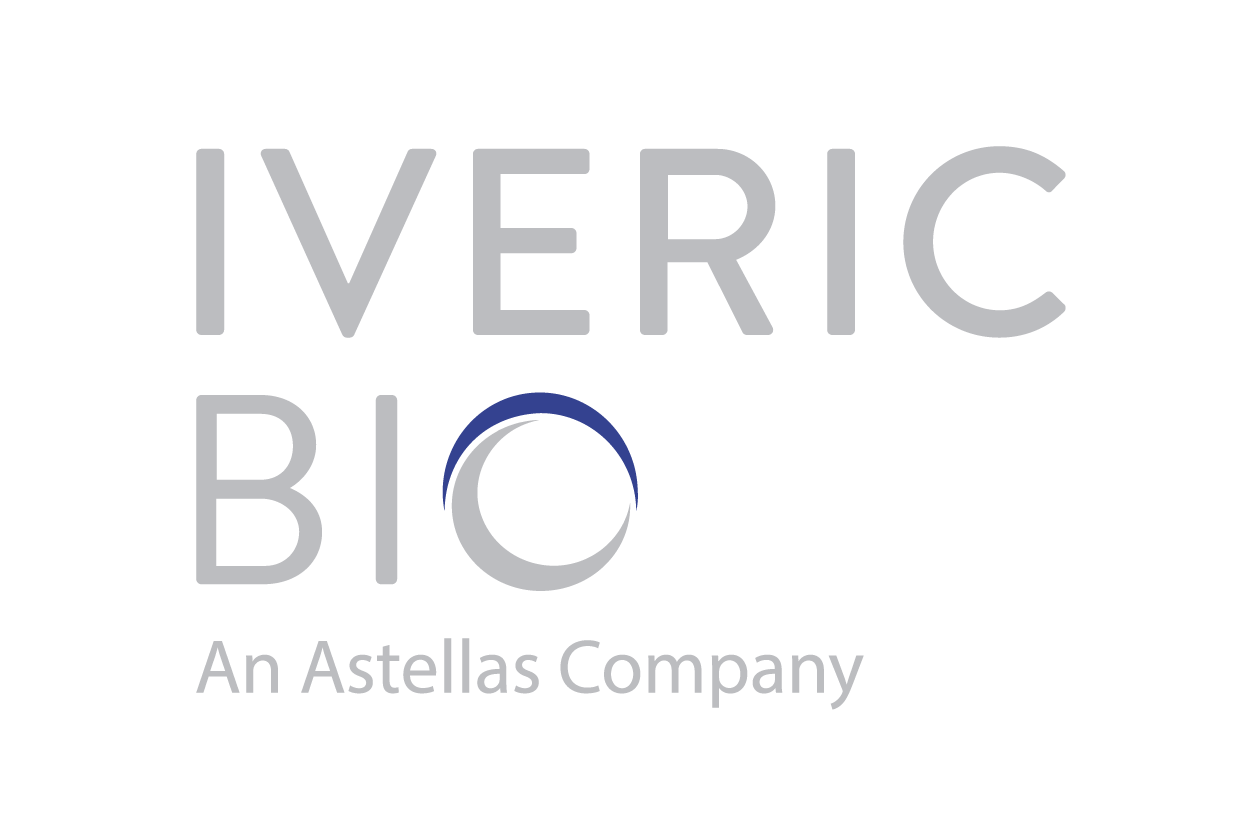


BrightFocus Foundation is a premier global nonprofit funder of research to defeat Alzheimer’s, macular degeneration, and glaucoma. Through its flagship research programs — Alzheimer’s Disease Research, Macular Degeneration Research, and National Glaucoma Research— the Foundation has awarded nearly $300 million in groundbreaking research funding over the past 51 years and shares the latest research findings, expert information, and resources to empower the millions impacted by these devastating diseases. Learn more at brightfocus.org.
Disclaimer: The information provided here is a public service of BrightFocus Foundation and is not intended to constitute medical advice. Please consult your physician for personalized medical, dietary, and/or exercise advice. Any medications or supplements should only be taken under medical supervision. BrightFocus Foundation does not endorse any medical products or therapies.

Join us for a conversation about light therapy and macular degeneration, where we’ll explore how different types of light—blue, red, and sunlight—affect the retina, the science behind light therapy, and the newly approved Valeda red light therapy
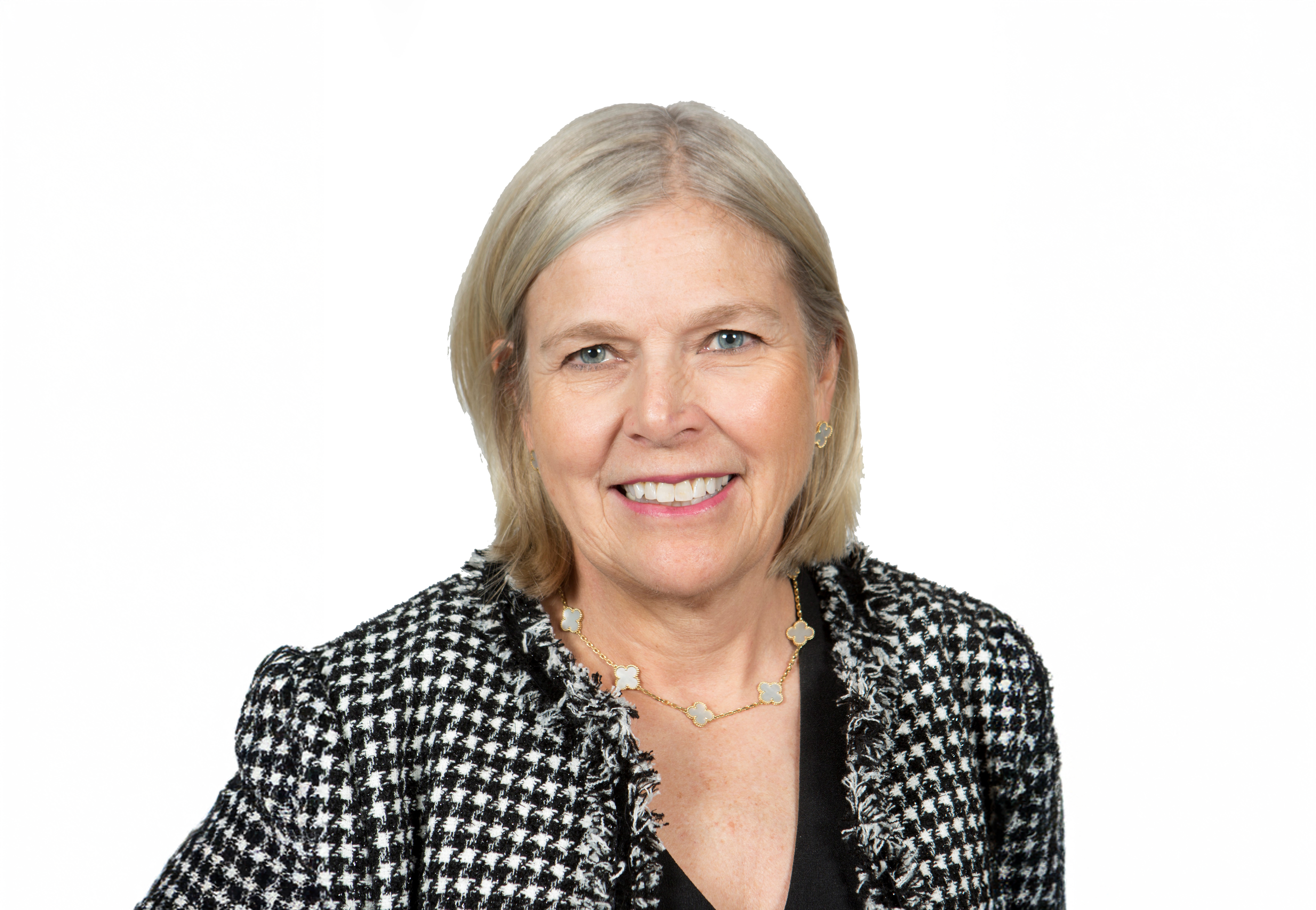
Learn about how to navigate treatment options, engage in shared decision-making with your healthcare team, and maximize your eye health.
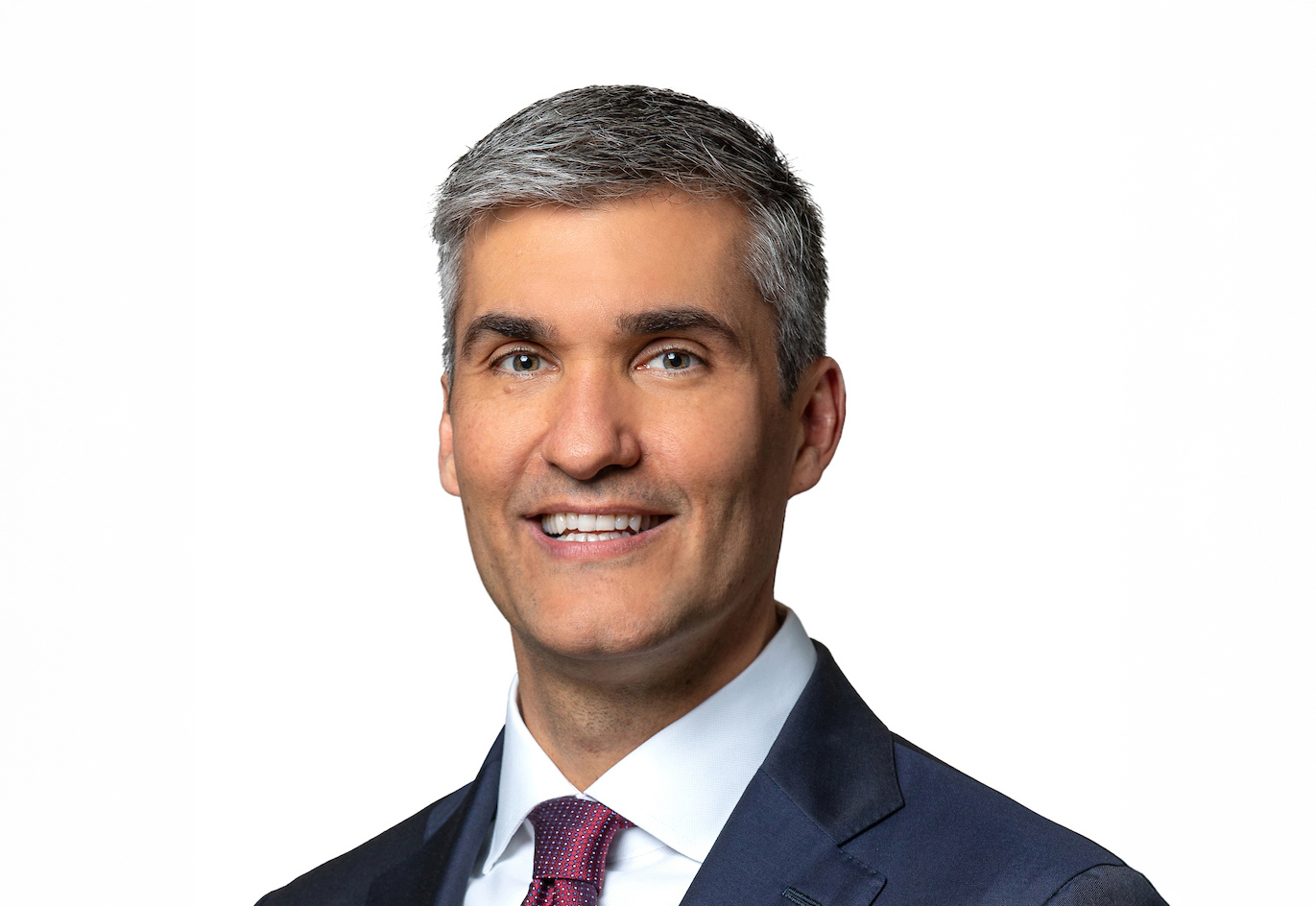
Join us for an in-depth discussion on the latest developments in wet age-related macular degeneration treatment.
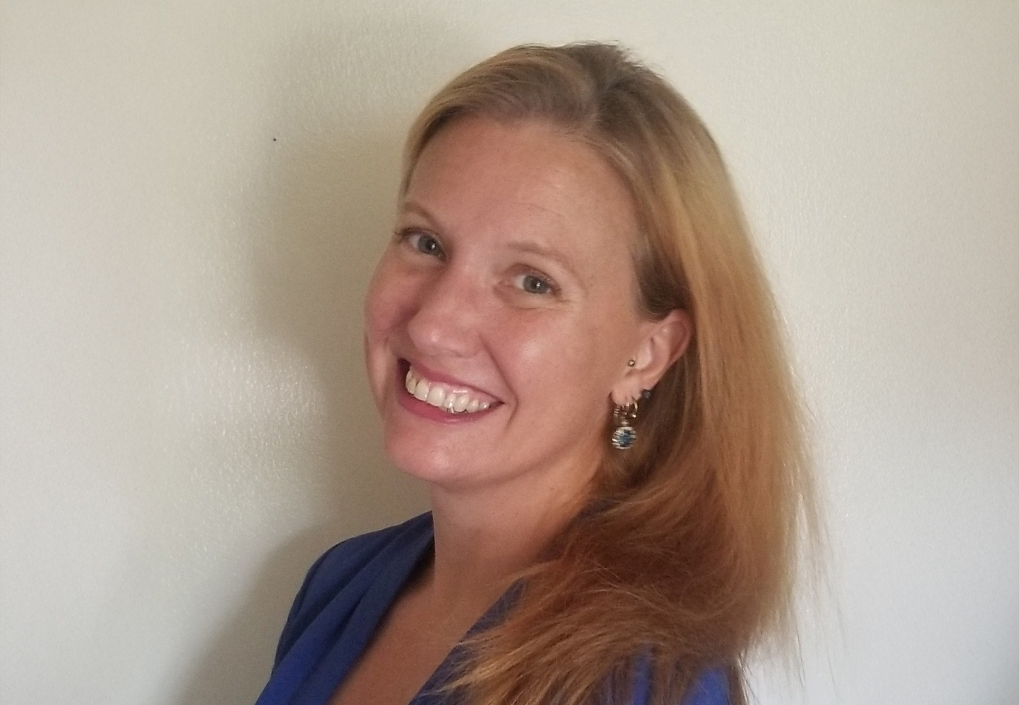
Learn about practical tips for maintaining quality of life with low vision.
